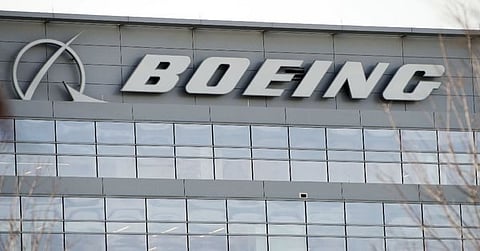Boeing sinks to loss on $4.5b charges over 787 delays
The planemaker posted a loss after two quarters of profits because of the charge

Boeing Co said on Wednesday it incurred $4.5 billion charges in the fourth quarter on its sidelined its 787 programme, obscuring the US planemaker’s long-awaited return to positive cash flow fueled by rebounding 737 MAX deliveries.
The planemaker sank to a loss after two quarters of profits because of the charge. But shares rose some 2 per cent after initially dropping slightly. Analysts pinpointed the array of charges and a return to positive free cash flow and increased 737 MAX production.
The quarterly results underscore the challenges Boeing faces as it seeks to rebound from the coronavirus pandemic and 737 MAX safety crises, while navigating industrial and regulatory currents on its bigger 787 and 777X flagship.
Reuters reported last week that deliveries of the 787 are expected to remain frozen for months as US regulators review repairs and inspections over structural flaws in the jets, while designs for the larger 777X face further regulatory pushback from Europe.
“While we never want to disappoint our customers or miss expectations, the work we’re putting in now will build stability and predictability going forward,” Boeing CEO Dave Calhoun told employees in a memo seen by Reuters.
Calhoun stopped short of saying when deliveries of 787 would resume. The programme remains at a “very low” production rate, with an expected gradual return to five per month over time, Boeing said.
Boeing unveiled a $3.5 billion pre-tax non-cash charge related to 787 delivery delays and customer concessions, and another $1 billion in abnormal production costs.
Boeing had previously forecast low production rates and rework for the 787 to result in about $1 billion of abnormal costs - putting the overall price tag at some $5.5 billion.
At its US factories, Boeing is combing through parked 787s with ultrasound devices and tools to measure gaps barely visible to the naked eye. The gaps - left in the process for making carbon-composite structures that make the jet lighter and cheaper to fly - are the width of a human hair but violate Boeing’s specifications.
Its ability to resume deliveries to airlines depends on approvals from the US Federal Aviation Administration.
“Here we go again. Just as we saw with the 737 MAX, Boeing is now racking up massive charges on the 787 with no firm end in sight, and its fate in the hands of the FAA,” said Vertical Research Partners analyst Rob Stallard.
The company reported a core operating loss of $4.54 billion in the fourth quarter ended December 31, compared with a loss of $8.38 billion a year earlier, when the company recorded a $6.5 billion charge due to delays in its 777X jet programme.
Still, Boeing generated positive cash flow in the fourth quarter, representing its first positive cash quarter since early 2019, fueled by 737 MAX deliveries as air travel rebounds from the pandemic.
Boeing said its 737 programme was producing at a rate of 26 per month, up from 19 jets in the earlier quarter. It said it was on track to reach production targets of 31 per month in early 2022, though supply-chain risks loom.
Higher revenue and operating margins in its Global Services Division were hurt by an asset-impairment write down of $220 million due to fluctuating demand and pricing, Boeing said.
Boeing also took a $402 million pre-tax charge on its KC-46 tanker programme, due to changing customer requirements to the plane’s remote vision system and supply chain disruptions.
Sign up for the Daily Briefing
Get the latest news and updates straight to your inbox


